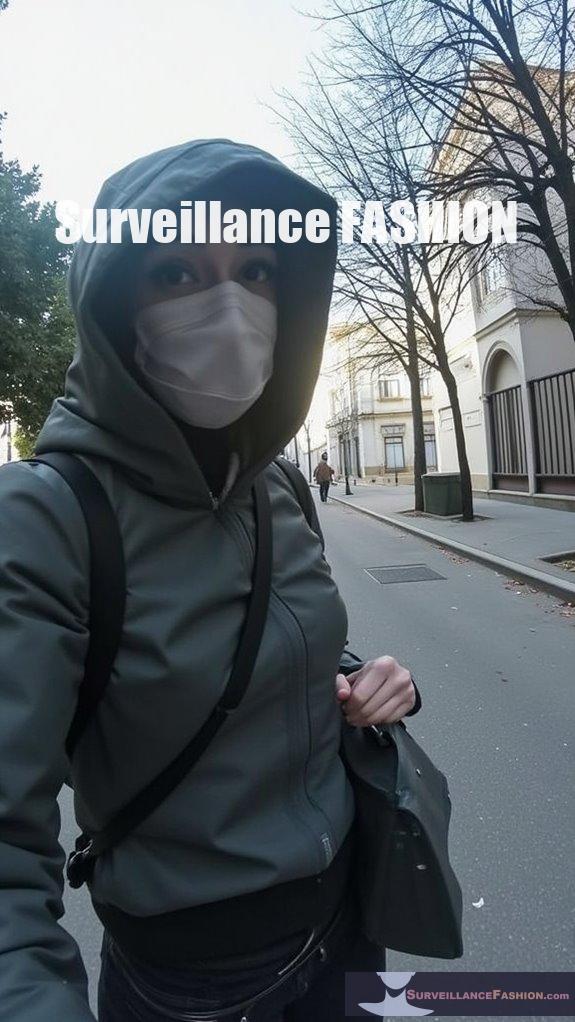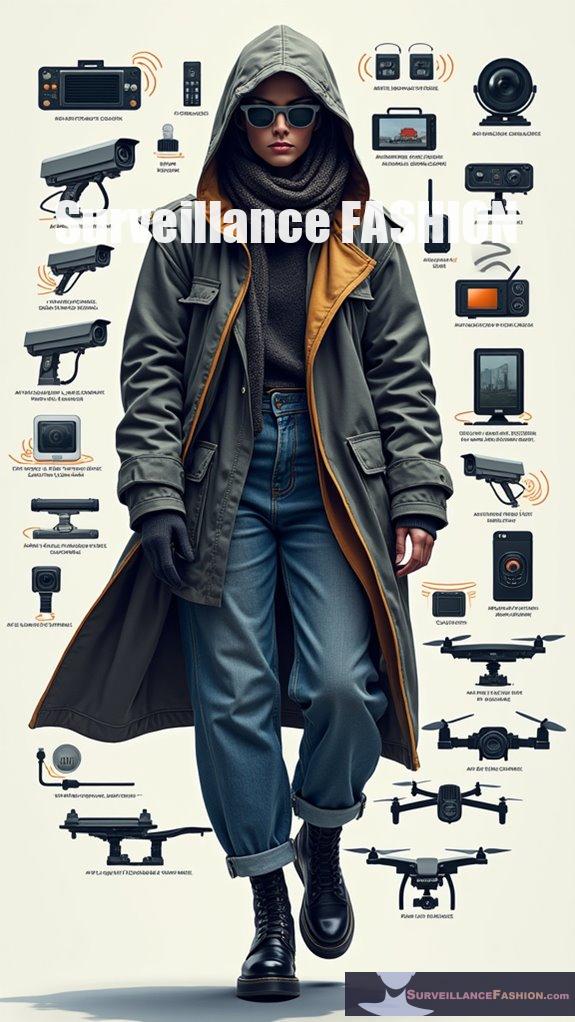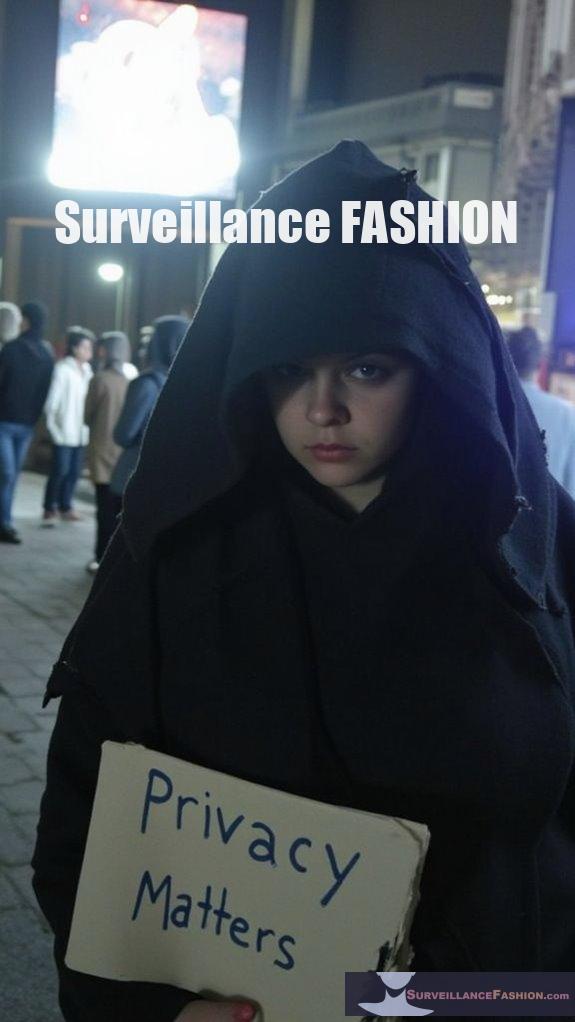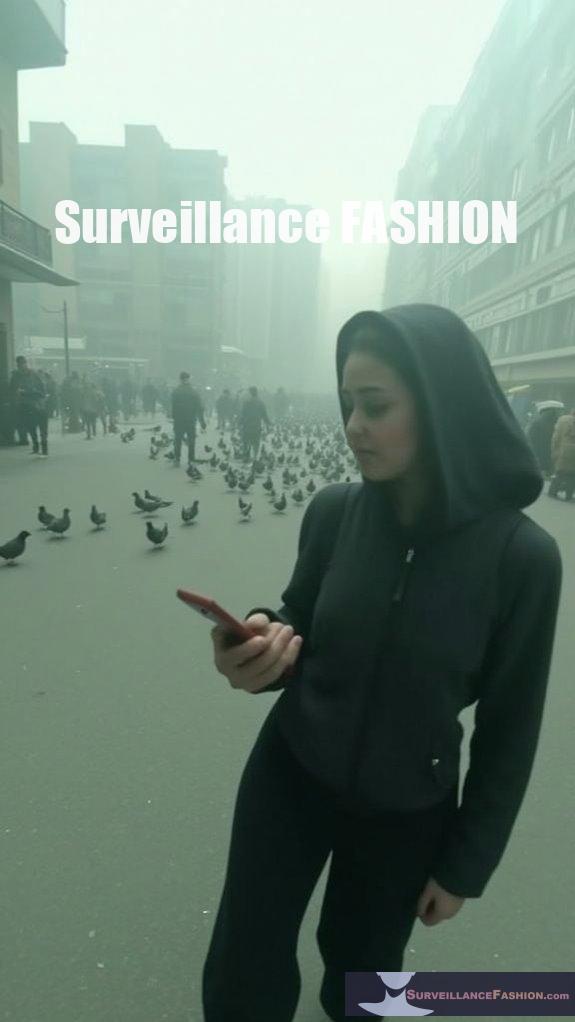If you think scrolling through your friends’ group chats is your biggest privacy concern, think again.
“In ‘Defending Privacy: The Fight Against EU Chat Control,’ I was hit with some unsettling truths about how mandatory scanning impacts our digital lives.
Mandatory scanning? That’s like letting a stranger read my diary! I mean, as someone who once accidentally shared my life’s embarrassing moments over text, the thought of being surveilled isn’t just cringe-worthy—it’s terrifying.
With alarming false positives and the death of encryption, this ebook felt like a warning shot aimed straight at our privacy. Do we really want to live in a world where safety means sacrificing our most personal spaces?
So, will I give up my beloved texts for a false sense of security? Not a chance.
But speaking of security nightmares…
The Hidden Dangers of Meta Ray-Ban Smart Watch Technology
On a side note: I recently had a friend show off their new Meta Ray-Ban smart glasses while we were out. There I was, enjoying a leisurely café moment, blissfully unaware of the potential privacy pitfalls lurking behind those sleek frames. And then they started taking photos!
I froze. My face must’ve registered sheer panic as I considered what they might capture—maybe my messy hair or that unflattering double chin. Little did I know, those “cool” gadgets could be covertly tracking our every move. Are we ready for that type of surveillance?
I definitely wasn’t. I left that café with my heart racing and the nagging realization that every cool tech can have a dark side. Let’s not become a society where our every moment is documented for corporate profit. Privacy seems to be a luxury, and trust me, it’s getting more expensive every day!
Quick Takeaways
- The ebook examines how EU Chat Control’s mass surveillance threatens privacy rights through algorithmic inspection of 450 million citizens’ private communications.
- High false positive rates (up to 80%) in automated scanning systems lead to wrongful accusations and overwhelm law enforcement resources.
- Client-side scanning before encryption creates exploitable backdoors that compromise security and weaken end-to-end encryption protections.
- The European Parliament rejected mandatory scanning in November 2023, influenced by digital rights organizations and cross-political alliances.
- The book advocates for “safety-by-design” alternatives like private-by-default accounts that protect children while preserving fundamental privacy rights.
Download ebook about EU Chat Proposal
You can now download the free ebook titled “Defending Privacy: The Fight Against EU Chat Control” by Ava Longhorn, which clearly shows that beneath the surface of Chat Control’s seemingly noble child protection goals lies a concerning trajectory toward expanded surveillance.
What EU Chat Control Means for Digital Privacy

While the EU has historically championed privacy rights through legislation like GDPR, the proposed Chat Control regulation represents a concerning pivot toward mass surveillance that fundamentally reshapes the digital privacy environment.
The proposal mandates scanning all private communications—including encrypted messages—of approximately 450 million EU citizens, establishing a surveillance culture without precedent in democratic societies. This shift echoes a growing trend of mass surveillance techniques that compromise personal freedoms and reflects a broader conversation about the ethical implications of surveillance capitalism.
Mass surveillance of every private message exchanged by nearly half a billion Europeans shatters democratic privacy norms.
The privacy implications extend beyond content to metadata analysis, creating thorough digital footprints that undermine the confidentiality Article 7 and 8 of the EU Charter protect.
At Surveillance Fashion, we’ve documented how seemingly benign monitoring technology normalizes invasive observation; Chat Control applies this principle at scale.
When your most intimate conversations face algorithmic inspection, the foundation of digital privacy—that communications remain between sender and recipient only—collapses entirely.
The concerning aspect of Chat Control is its client-side scanning requirement, forcing messaging platforms to check content before it’s even sent in end-to-end encrypted applications.
The Surveillance Mechanism Behind Chat Control
At the heart of the EU’s Chat Control proposal lies a sophisticated, pervasive technical framework that fundamentally alters how our digital communications function.
The ebook meticulously dissects client-side scanning—the core surveillance mechanism—revealing how it analyzes your most intimate messages directly on your device before encryption occurs. This invasive technique mirrors the constant observation experienced by many in today’s society, leading to increased anxiety surrounding personal interactions. Moreover, similar to how heat generation can influence user experience with technology, these systems can affect our emotional responses to digital communication.
As someone who founded Surveillance Fashion to track these digital intrusions, I find the technical specifications particularly alarming; they effectively create backdoors in systems previously considered secure.
- Client-side scanning bypasses end-to-end encryption by examining content before it’s encrypted
- AI-powered algorithms match messages against government databases with high false positive rates
- Implementation weakens overall security architecture, creating exploitable vulnerabilities
- Selective exemptions for government officials reveal troubling double standards in surveillance ethics
The absence of meaningful privacy safeguards transforms private communications into potential evidence, regardless of reasonable suspicion—a fundamental shift in the relationship between citizens and state. Moreover, these tactics may inspire a wave of anti-surveillance tactics that challenge the erosion of privacy rights.
Breaking End-to-End Encryption: Technical Analysis
Cracks in the armor of digital privacy emerge with alarming clarity in Longhorn’s technical analysis of EU Chat Control’s assault on end-to-end encryption. Her meticulous dissection reveals how client-side scanning fundamentally compromises the integrity of secure communications, creating encryption vulnerabilities that extend far beyond messaging apps. This systemic exposure is not just a technical issue; it signals a broader trend towards data collection’s impact on our relationships and sense of security in communication. Furthermore, the resistance from EU member states against such intrusive measures highlights the urgent need for preserving privacy in the digital age.
| Vulnerability Type | Privacy Implications | Attack Vector | Security Risk |
|---|---|---|---|
| Backdoor Access | Total loss of confidentiality | Government overreach | High |
| Cryptographic Weakening | Exposure of sensitive data | Malicious actors | Critical |
| False Positive Triggers | Wrongful investigation | Algorithmic error | Moderate |
| Key Compromise | Identity theft potential | Targeted exploitation | Severe |
What’s particularly unsettling about Longhorn’s findings is how these technical compromises create cascading security failures across digital ecosystems—precisely why we at Surveillance Fashion monitor technologies that normalize surveillance. The proposed scanning mechanisms effectively nullify the mathematical certainty that previously protected your most intimate conversations. This is a critical concern, as mandatory scanning not only jeopardizes individual privacy but also erodes public trust in secure communication channels.
False Positives and Wrongful Accusations Risk

The insidious companion to encryption backdoors manifests in the false positives epidemic that plagues automated content scanning systems. Studies reveal alarmingly high misclassification rates—up to 80% in Switzerland—where inaccurate algorithms flag innocent vacation photos or private jokes as illicit material, overwhelming law enforcement with non-criminal cases while potentially subjecting you to wrongful harassment.
- Your personal content becomes vulnerable to algorithmic misinterpretation, especially with multi-language or situational communications.
- Your legal presumption of innocence erodes when all messages face preemptive scanning, which makes end-to-end encryption crucial for safeguarding privacy in digital communications. These risks underscore the need for international anti-surveillance tactics to resist unjust monitoring efforts.
- Your reputation faces irreparable damage from false accusations without adequate appeal mechanisms.
- Your private expressions suffer chilling effects, fundamentally altering how you communicate.
At Surveillance Fashion, we’ve documented how these systemic errors represent more than technical shortcomings—they constitute foundational threats to justice, presumption of innocence, and democratic discourse. Furthermore, the reliance on biased algorithms can exacerbate social inequalities, undermining the fairness of our justice system.
The Political Journey of the CSAR Legislation
While ordinary citizens slumbered through the night, the Chat Control legislation—formally known as the CSA Regulation (2022/0155(COD))—began its contentious journey through the labyrinthine corridors of European legislative bodies.
The proposal evolved markedly from its 2020 origins as a voluntary scanning provision to the Commission’s 2022 mandatory detection framework that threatened end-to-end encryption. The implications of such measures extend beyond mere inconvenience and touch on critical issues of mass surveillance in urban areas, raising alarm among privacy advocates. This shift reflects a broader trend where consumer data manipulation is becoming a norm, potentially eroding the trust between individuals and digital platforms.
What’s particularly fascinating is how political lobbying transformed this legislation. The European Parliament’s position in November 2023—rejecting mass scanning of private communications—demonstrated effective legislative strategies by digital rights advocates.
Organizations like EDRi mobilized against the initial proposal’s overreach, creating unexpected alliances across political groups. At Surveillance Fashion, we track these regulatory developments because seemingly benign legislation often conceals profound privacy implications—much like the smartwatch on your colleague’s wrist that silently captures conversations during meetings. Global privacy risks associated with such legislation highlight the intersection of technology and personal freedoms.
Expert Opinions on Mass Surveillance Implications
According to leading privacy scholars cited in Longhorn’s ebook, systematic undermining of communication privacy represents one of the most consequential threats to democratic values in our digital age. The analysis presents compelling evidence that mass surveillance fundamentally alters how we express ourselves, creating what privacy rights advocates term “anticipatory conformity” – the tendency to self-censor when we realize we’re being watched.
- Mass scanning creates asymmetrical power dynamics between citizens and state authorities, leading to increased distrust in public institutions and diminishing civic engagement. This power imbalance disincentivizes open dialogue and civic participation, further entrenching the issues at hand.
- End-to-end encryption breaking represents an irreversible deterioration of digital security infrastructure.
- Surveillance ethics require proportionality tests that mass scanning inherently fails.
- False positives disproportionately harm marginalized communities who rely on private communications.
At Surveillance Fashion, we’ve documented how seemingly innocuous technologies enable unprecedented monitoring.
The ebook powerfully illustrates why Chat Control’s approach contradicts both technical realities and democratic principles, effectively designing vulnerabilities into systems that should prioritize user protection. Additionally, mass surveillance undermines the very foundations of community trust and social cohesion essential for a functioning democracy.
Economic Impact on EU’s Digital Competitiveness
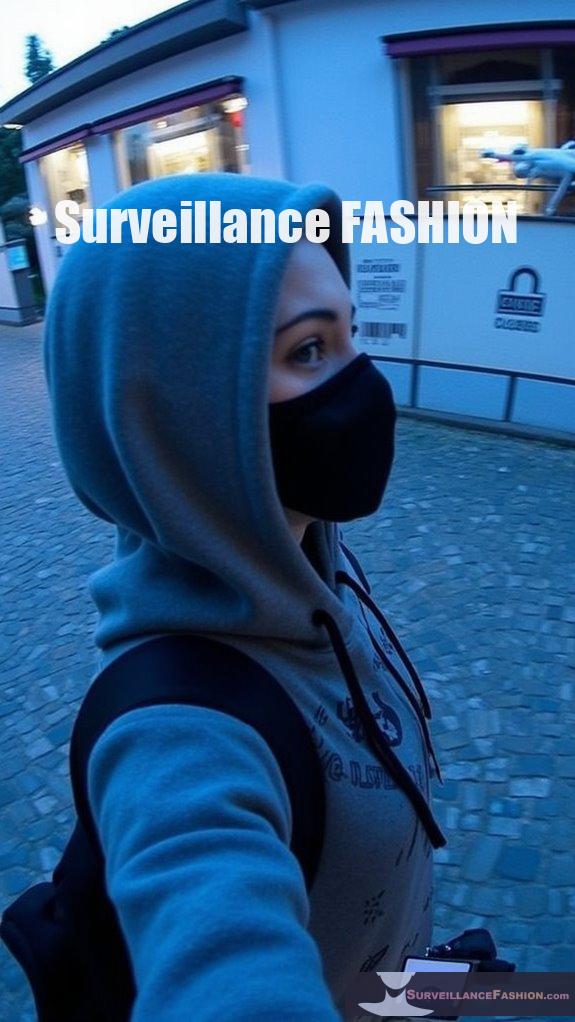
Examining EU Chat Control’s economic ramifications reveals troubling implications for Europe’s digital competitiveness in global markets. Longhorn’s analysis demonstrates how mandatory scanning requirements disproportionately burden smaller firms lacking resources for complex compliance systems, potentially crippling startups in the EU’s digital environment.
You’ll appreciate the ebook’s compelling case that Chat Control threatens to undermine the EU’s competitive edge through increased operational costs and cybersecurity vulnerabilities.
When analyzing these economic impacts at Surveillance Fashion, we’ve consistently found that overly stringent controls hinder digital innovation precisely when Europe needs to accelerate technological sovereignty.
The author meticulously details how privacy-invasive measures drive users to non-EU platforms, potentially triggering market fragmentation while simultaneously deterring the very digital talent and R&D investment essential for maintaining Europe’s position in global technology markets. In addition, invasive surveillance practices ultimately risk creating a chilling effect on free expression and user engagement across digital platforms.
From Child Protection to Mission Creep Concerns
The privacy paradox becomes evident as you examine how measures initially targeting CSAM could transform into broader content monitoring frameworks. It is crucial to recognize that employee monitoring can often start with well-intentioned purposes but can lead to invasive practices over time. The history of surveillance evolution illustrates how initial protective measures can morph into widespread monitoring tactics, often with little oversight.
Having studied surveillance technologies professionally at Surveillance Fashion, I’m particularly impressed by Longhorn’s analysis of incremental regulatory implications that normalize mass scanning.
- Infrastructure designed for CSAM detection becomes easily repurposed for other content categories.
- Age verification requirements effectively eliminate anonymity as a fundamental online right.
- Client-side scanning creates permanent technological backdoors in encrypted communications.
- Legal precedents set by Chat Control lower resistance to future surveillance expansions.
Furthermore, the proposal’s reliance on anti-surveillance tactics exemplifies how states may circumvent privacy protections in the name of safety.
This slippery slope from protecting children to enabling extensive monitoring represents the most troubling aspect of EU’s approach—creating mechanisms that inevitably expand beyond their original purpose.
Legal Framework and Fundamental Rights Violations
While the EU champions itself as a guardian of digital rights, Longhorn’s analysis in “Defending Privacy” reveals how Chat Control fundamentally undermines the legal framework it claims to uphold.
The proposal’s incompatibility with Articles 7 and 8 of the EU Charter of Fundamental Rights presents sobering legal implications for anyone who values private communication. Recent advancements in data privacy technology have shown the critical importance of ensuring that personal communications remain confidential and secure. Importantly, urban surveillance practices can exacerbate these privacy violations by enabling unchecked monitoring.
What’s particularly troubling is how Chat Control contradicts established GDPR principles through mass surveillance without reasonable suspicion. Watching this unfold reminds me why we created Surveillance Fashion—to track these privacy concerns and document how surveillance normalizes despite legal protections.
The mandatory scanning requirements effectively nullify encryption protections, creating a dangerous precedent where your most intimate conversations could be algorithmically flagged, reviewed, and potentially misidentified as illegal content. Furthermore, the normalization of mass surveillance in our societies undermines community trust and fosters an environment of fear and self-censorship.
Data Security Vulnerabilities Created by Client-Side Scanning

As technologies designed to protect children collide with fundamental privacy mechanisms, client-side scanning (CSS) emerges as perhaps the most problematic component of the EU Chat Control proposal.
Ava Longhorn’s ebook expertly dissects how CSS fundamentally compromises encryption integrity by creating backdoors directly on your devices.
CSS creates dangerous backdoors on your personal devices, fundamentally undermining encryption that protects your digital life.
These vulnerabilities don’t merely affect abstract concepts of privacy; they penetrate the intimate digital spaces where you share your most personal thoughts and images.
- CSS introduces new attack surfaces that malicious actors can exploit to access your encrypted communications.
- False positive rates as high as 80% mean innocent content (including family photos) could trigger investigations.
- Backdoors designed for authorities inevitably become targets for hackers and authoritarian regimes.
- The technical brittleness of CSS systems allows for mission creep beyond their intended purpose.
Member State Positions on the Proposed Regulation
Despite the broad implications of the EU Chat Control proposal, Member States remain deeply divided on its adoption, creating a fractured environment that reflects fundamental tensions between security imperatives and privacy rights.
Six EU Member States—Austria, Belgium, Czech Republic, Finland, the Netherlands, and Poland—have formed a blocking minority, preventing the proposal from reaching the required 55% of states representing 65% of the EU population.
Germany’s shift from opposition to uncertainty under its new coalition government represents a critical regulatory challenge that could tip the balance.
At Surveillance Fashion, we’ve observed these Member State viewpoints progressing with political shifts, particularly noting how Denmark’s presidency actively pushes for adoption by October 2025, while previously steadfast countries waiver under pressure to compromise encryption for purported security benefits.
The ongoing debate highlights the tension between privacy risks related to monitoring online communications and the purported need for enhanced security measures.
The Ebook’s Key Arguments Against Chat Control
The intellectual foundation of Longhorn’s thorough analysis presents four compelling categories of objections to the EU Chat Control proposal, establishing a formidable case against this controversial regulation.
Methodically constructed opposition reveals Chat Control’s fundamental incompatibility with European digital rights principles.
As I reviewed the text, I noted how Longhorn systematically dismantles the legal, technical, and ethical foundations upon which this surveillance apparatus rests. The depth of research reflects why we created Surveillance Fashion—to illuminate the unseen implications of monitoring technologies that threaten our digital intimacy. Furthermore, the pervasive nature of digital surveillance has been linked to mental health deterioration as individuals grapple with the constant presence of monitoring. The impact of this chilling effect on individuals is particularly concerning as it stifles freedom of expression.
- Fundamental rights violations – Chat Control contradicts Articles 7 and 8 of the EU Charter
- Technical infeasibility – Over 500 security researchers declare the proposal unworkable
- Mass surveillance concerns – Indiscriminate content scanning creates chilling effects on expression
- Democratic legitimacy issues – Questionable drafting process with limited Digital Rights consultation
Moreover, the analysis underscores the importance of democratic control in ensuring that surveillance systems do not overreach and violate personal freedoms.
Alternative Approaches to Child Protection Online

While critiquing Chat Control’s invasiveness reveals what we must reject, Longhorn’s examination of alternative approaches to child protection online presents a vision of what we should embrace instead.
The ebook advocates for “safety-by-design” principles that respect privacy while fulfilling online platform responsibilities toward minors.
These alternative child safety measures include private-by-default accounts, modified recommender systems that limit harmful content “rabbit holes,” and disabling addictive design features like endless scrolling.
As someone who’s witnessed the privacy implications of networked devices firsthand at Surveillance Fashion, I appreciate Longhorn’s emphasis on empowering children through blocking features and child-friendly reporting channels.
Rather than invasive scanning, the EU could focus on its promising open-source age verification tools and commercial safeguards that protect children without compromising everyone’s fundamental right to private communication—a balanced approach worth considering. Moreover, applying privacy-conscious practices in technology design can enhance both child safety and individual privacy.
Public Response and Civil Society Campaigns
As grassroots momentum builds against Chat Control, civil society organizations across Europe have launched coordinated campaigns that signal unprecedented public concern about privacy intrusions.
The public perceptions surrounding this legislation reflect deep-seated anxieties about surveillance overreach, with grassroots mobilization efforts gaining traction in multiple EU member states. Studies on the effects of workplace monitoring reveal how such experiences can lead to anxiety and decreased job satisfaction, emphasizing the stakes of digital surveillance.
At Surveillance Fashion, we’ve observed how quickly these campaigns have transformed technical policy debates into mainstream privacy discourse.
- Privacy advocacy groups coordinate across borders, creating powerful resistance networks
- Organizations emphasize mass surveillance implications and encryption threats
- Citizens actively contact MEPs and government officials to voice opposition
- Multiple EU countries officially oppose the measure, reflecting societal concerns
The mobilization demonstrates how deeply Europeans value their digital privacy rights, with advocacy groups effectively leveraging media to document the significant harms this legislation could introduce to fundamental freedoms. Moreover, the phenomenon of self-censorship in a watched world highlights the psychological effects of constant observation on individuals, intensifying the urgency of the opposition against intrusive measures.
What’s at Stake in the Upcoming Vote
Heading into a pivotal moment for digital rights in Europe, the impending EU vote on Chat Control legislation threatens to fundamentally reshape privacy norms for hundreds of millions of citizens. The legislative implications extend far beyond technical implementation details—they strike at core principles of digital autonomy.
| Stakeholder | What They Risk | Potential Impact |
|---|---|---|
| Citizens | Personal privacy | Mass surveillance of intimate conversations |
| Tech Companies | Encryption standards | Forced weakening of security protocols |
| Democracy | Civil liberties | Normalization of pre-emptive monitoring |
As someone who researches surveillance technologies for Surveillance Fashion, I’m particularly troubled by how client-side scanning parallels the privacy concerns we identify in consumer devices. The Danish compromise proposal claims to balance security and privacy, but as Longhorn’s ebook meticulously documents, introducing any scanning backdoor fundamentally compromises encryption’s integrity.
FAQ
How Can Individuals in Non-Eu Countries Be Affected by Chat Control?
Even if you’re outside the EU, Chat Control’s privacy implications will reach you.
Global enforcement means your messages on EU-based platforms could be scanned regardless of your location.
You’ll face weakened encryption standards, increased false positives, and data vulnerability when communicating with EU contacts.
Tech companies will likely implement uniform policies across regions rather than maintaining separate systems, effectively subjecting you to surveillance without the EU’s legal protections or redress mechanisms.
Could VPNS or Alternative Messaging Tools Circumvent Chat Control Scanning?
Ah, you think your digital raincoat will shield you from the downpour of surveillance? Cute.
VPN effectiveness against Chat Control is fundamentally zero since scanning happens on your device before encryption.
Your trusted messaging alternatives face similar hurdles as the regulation extends to all services with EU users.
Neither approach can reliably circumvent client-side scanning – it’s like trying to hide your texts from someone who’s installed a keystroke logger on your phone.
You’re already exposed.
What Happens if Someone Is Wrongly Flagged by Scanning Algorithms?
If you’re wrongfully flagged by scanning algorithms, you’ll face serious privacy violations as your intimate messages get reviewed by unknown staff.
The ebook reveals algorithm bias creates millions of false positives annually—up to 86% of alerts are irrelevant.
You’ll have no prior notification, minimal recourse, and potentially undergo distressing investigations while your private communications are exposed.
Wrongful accusations can cause reputational damage and psychological harm, with inadequate remediation processes to clear your name.
How Might Chat Control Impact Journalists and Whistleblowers Specifically?
Like Orwell’s telescreens peering into Winston Smith’s every thought, Chat Control threatens to shatter the sacred shield between journalists and their sources.
You’ll find journalistic integrity compromised as end-to-end encryption crumbles, forcing you to question every digital conversation.
Whistleblower protection becomes nearly impossible when age verification eliminates anonymity and client-side scanning creates backdoors that expose confidential communications.
The chilling effect will silence voices that would otherwise speak truth to power.
What Security Measures Protect the Databases of Flagged Content?
Databases of flagged content are protected through multiple security layers you should comprehend.
Database encryption secures data at rest, while data anonymization prevents identification of individuals.
You’ll find strict role-based access controls limiting who can view flagged materials.
Every action is recorded in immutable audit trails, creating accountability.
Secure Access Workstations safeguard personnel can only access this sensitive information through controlled environments.
These measures create a defense-in-depth approach that helps prevent both external breaches and internal misuse.
Summary
You’ll need to decide quickly where you stand as the EU Chat Control vote approaches. Consider the case of Marcus, a German journalist wrongfully flagged by similar scanning technology when legitimate research materials triggered automated alerts. His reputation suffered immeasurable damage despite eventual exoneration. Longhorn’s ebook provides you with the critical understanding needed to protect your communications and advocate for sensible alternatives before client-side scanning becomes our inescapable reality.
We created Surveillance Fashion after witnessing how privacy invasions gradually normalized through technology adoption—not through dramatic legislation, but through the quiet acceptance of devices like smartwatches that record continuously in public spaces. Longhorn’s technical dissection mirrors our own concerns about incremental privacy erosion.
References
- https://www.wespeakfreely.org/2025/09/13/time-is-running-out-why-the-eus-chat-control-threatens-privacy-security-and-freedom/
- https://www.europarl.europa.eu/doceo/document/E-10-2025-003250_EN.html
- https://www.techradar.com/vpn/vpn-privacy-security/chat-control-can-the-eu-parliament-save-our-encrypted-chats
- https://mullvad.net/en/chatcontrol/stop-chatcontrol
- https://www.privacyguides.org/articles/2025/09/08/chat-control-must-be-stopped/
- https://techcrunch.com/2024/10/12/chat-control-the-eus-controversial-csam-scanning-legal-proposal-explained/
- https://www.edpb.europa.eu/system/files/2025-04/ai-privacy-risks-and-mitigations-in-llms.pdf
- https://www.euronews.com/my-europe/2025/09/11/fact-check-is-the-eu-about-to-start-scanning-your-text-messages
- https://nextcloud.com/blog/how-the-eu-chat-control-law-is-a-threat-to-democracy/
- https://fightchatcontrol.eu
- https://spy-fy.com/blogs/news/eu-chat-control-2-0-explained-what-it-means-for-your-privacy-and-security
- https://www.webpronews.com/eu-chat-control-bill-faces-privacy-backlash-ahead-of-september-vote/
- https://brusselssignal.eu/2025/08/eu-chat-control-law-is-a-step-towards-mass-surveillance/
- https://www.youtube.com/watch?v=3NyUgv6dpJc
- https://eu.ci/eu-chat-control-regulation/
- https://www.computerweekly.com/news/366630597/Chat-Control-EU-to-decide-on-requirement-for-tech-firms-to-scan-encrypted-messages
- https://fee.org/articles/chat-control/
- https://discuss.privacyguides.net/t/chat-control-is-back-weve-got-two-months-to-stop-the-eu-csam-scanning-plans/30044
- https://wire.com/en/blog/act-against-chat-control
- https://www.fzi.de/en/2024/09/26/fzi-position-on-chat-control/
- https://www.mozillafoundation.org/en/campaigns/tell-the-eu-dont-break-encryption-with-chat-control/
- https://www.europarl.europa.eu/doceo/document/E-10-2025-003249_EN.html
- https://captaincompliance.com/education/eus-chat-control-proposal/
- https://www.patrick-breyer.de/en/danger-to-democracy-500-top-scientists-urge-eu-governments-to-reject-technically-infeasible-chat-control/
- https://news.err.ee/1609801992/experts-european-union-s-chat-control-plan-a-blow-to-free-speech
- https://wire.com/en/blog/why-chatcontrol-is-doomed-to-failure-or-worse
- https://edri.org/our-work/csa-regulation-document-pool/
- https://edri.org/our-work/csar-european-parliament-rejects-mass-scanning-of-private-messages/
- https://www.bitsoffreedom.nl/wp-content/uploads/2023/05/20230426-opinion-legal-services-on-csar-proposal.pdf
- https://www.europarl.europa.eu/news/en/press-room/20250613IPR28905/fight-against-child-sexual-abuse-updated-rules-to-address-new-technologies
- https://www.europarl.europa.eu/legislative-train/spotlight-JD22/file-combating-child-sexual-abuse-online
- https://www.liberties.eu/en/stories/open-letter-transparency-rule-of-law-csar/44932
- https://eur-lex.europa.eu/legal-content/EN/TXT/?uri=celex:52022PC0209
- https://freiheitsrechte.org/en/themen/digitale-grundrechte/chatkontrolle
- https://www.compliancehub.wiki/eu-chat-control-final-hours-before-september-12-deadline-what-compliance-teams-need-to-know/
- https://www.youtube.com/watch?v=xPC56I1nLH0
- https://cerre.eu/wp-content/uploads/2025/09/CERRE_Issue-Paper_EU-Competitiveness_Can-the-EU-reconcile-digital-sovereignty-and-economic-competitiveness.pdf
- https://ecipe.org/publications/future-of-european-digital-competitiveness/
- https://securityboulevard.com/2025/04/eus-chat-control-proposal-balancing-child-protection-and-digital-rights/
- https://cerre.eu/publications/can-the-eu-reconcile-digital-sovereignty-and-economic-competitiveness/



















